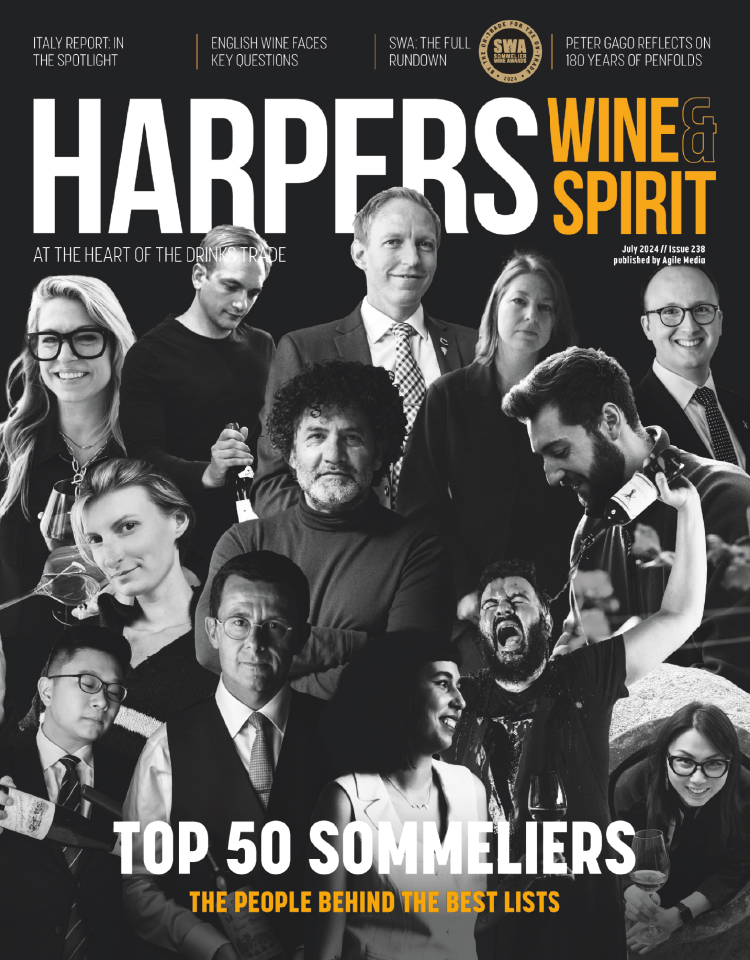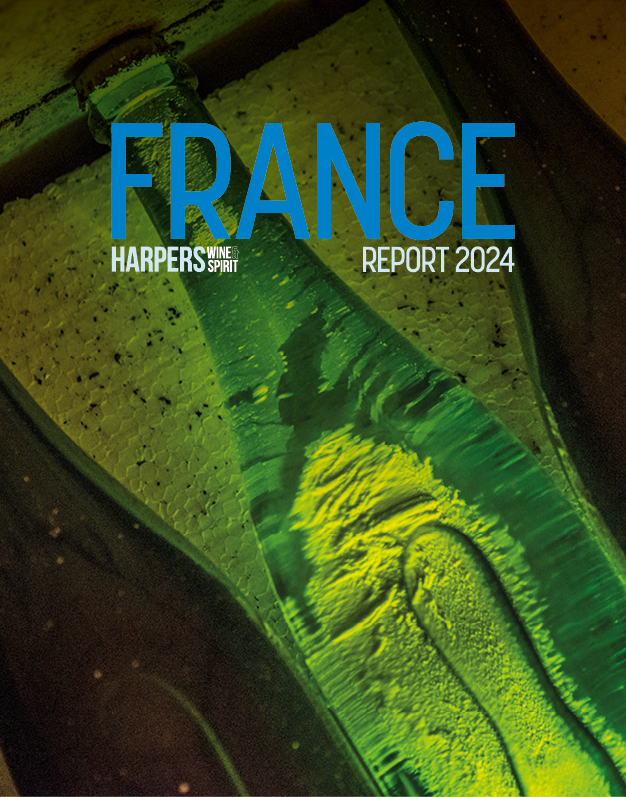Bryan Urbick: how sharing knowledge can help master consumer knowledge
Every year hundreds of millions of pounds are spent on consumer and market research. Whether for NPD or to determine how to further develop a brands' journey, a myriad of research projects is deemed fundamental and justifies the investment of time and money.
Imagine launching a new drink variant or beverage label with little or no research. Unlikely, unless it is a small brand or a new entrepreneur that believes in and wants to pursue his/her idea. In the bigger brands and companies, though, the brand managers and researchers may be wasting a good portion of their research budget simply by overlooking what they already have to hand.
A little bit of context is necessary at this stage. By their very nature, brand and research managers live in silos. They focus on their own brand portfolio, which is, for the most part, brand- or category-based. In fact the drinks industry is particularly prone to keeping its many brands and categories apart, for the key reason that this is believed to simplify and engender clearer focus.
Even within the spirits sector there is a chasm between dark spirits and light spirits, whilst beer and wine are almost opposite ends of the spectrum when it comes to research projects.
When considering the consumers, though, there will be, without doubt, huge crossovers. This simple fact can account for the waste of excellent research material each year. This is where it gets interesting.
Sharing resources
Research these days mines for so much information, throws up innumerable insights, opens up so many new opportunities - and very often for only that designated project, brand or category.
The brand teams involved will work through all the information to hand, they may even wring the last drop of insight out of the findings, and then they will move on to the next project, and often fresh research will be commissioned.
It is quite understandable, given these circumstances, that brand managers and market researchers will carefully defend their own patch and rarely think of checking out what research in or across parallel categories could throw up.
Why should they? They have tailor-made research specific to their brand and that is all they need to know - often it is almost more than they need to know too. Also, in these days of a more austere business approach, resources are so tight that there doesn't seem to be enough time to do any more than is being done.
Yet, if we took this research model and flipped it on its head, it is interesting to see what falls out. If, for instance we took all the research, from the numerous different teams, working across a company's brand portfolio, and took another look at it as a whole - across different categories; across the same or even different consumer demographics?
What, then if a new team of experienced researchers were brought in to re-review all of this research, but with the same 'eye'? What would emerge?
Well quite apart from the fact that the sheer amount of information would seem to be able to drown those unwilling to dive in, it is worth noting that a seasoned qualitative researcher is particularly attuned to seeing patterns and can help to see and link insights to their own wider experiences.
By overlaying numerous research findings that relate to a broad spectrum of brand themes, a whole new picture is likely to emerge. It is a little like those rather mind-boggling patterns that you need to step back and squint at to see a specific, previously unseen image.
Shared learning
Leveraging existing learnings (though looked at in a new way; with a new perspective) is an extremely valuable exercise. It is not simply a matter of recycling old information, far from it. This is about leveraging existing learnings in a wider, holistic context.
Not merely going back over individual research projects one by one, but literally overlaying all of the insights to see where common threads appear.
Taken on their own, many of these insights might have little to no impact, yet when seen in a cross-brand/cross-category context, they start repeating and compounding, revealing that something more fundamental may be going on.
What a good researcher is looking for in this type of research is quite different to going over one single research project - again it goes back to exploring emerging patterns. The aim is to establish those aspects that bridge across a portfolio that can be built to utilise momentum from one brand or category, and cross-fertilise it with the insights from another.
This can be particularly powerful in the case of NPD. So too is defining what 'disruptions' need to occur to alter the rules of the categories, through to analysing what knowledge gaps start cropping up. It is precisely these types of fresh insights, drawn from archived research which can be utilised across entire brand portfolios and foster common understanding.
Another huge benefit is that by default this type of research re-energises internal communications. Sharing learnings can ignite new concepts, ideas, ways of thinking and procedures, many of which, when taken individually on each project might not have survived.
For example, one piece of research may well highlight that women love the sweet 'creaminess' of Baileys, they love the sensuality of the brand. Overlay that then with Smirnoff research findings, that clearly define their target audience as young adults who like edgy, fun and funky. Now take a third piece of research, say for Guinness - with its 'man's man' personality.
Let's consider that all three probably have in common a message about not overdoing alcohol consumption, about being responsible - whilst this may not be thrown up in each brand's research, it could come up in the Bailey's and give some thoughts to cross over into the other two brands.
Meanwhile, Smirnoff and Guinness may well have comments in their research that match, such as the sensory experience, taste, texture, tongue-tingling effect, etc.
Whilst this could be important it would not come across in a single project as hugely impactful, yet when considered with Baileys it could well flag up a new possible sensory experience the brand could explore - focusing on women wanting something a little more adventurous yet still within the definition of 'sensuous'.
Then take Bailey's and Smirnoff who both would have cocktail information. Now could these trigger any thoughts or tiny threads of insight in the Guinness research which relates to new flavour variants?
Surprisingly, different innovation and brand building ideas come from each of these overlayed insight statements, and suddenly new creative ideas start coming to the fore.
Of course, the above examples may seem obvious and are simply meant to highlight a point. The real power of a research review comes from the wide range of different connections that occur when reviewing a bigger data set.
Qualitative data is, of course, by its nature very different - and does have many more assumptions of drivers of attitudes and values (all those 'why' questions).
Though often based on small sample sizes, and focused on specific attitudes and behaviours for which they are screened. When reviewing en mass, a more solid understanding can be gleaned. When we conduct research reviews for our clients, we consider qualitative and quantitative findings from the previous three to five years (depending on the project scope), so are often considering learnings from tens of thousands of consumers.
Now back to those organizational silos. There is of course value in the way that research is undertaken project by project. However, despite what brand and category teams may believe, lots of important information can be gained even years after the original research was undertaken.
In context, hindsight is a powerful thing. Partner this powerful hindsight with the creation of a multi-dimensional strategic framework, and we start to identify (and explore to some extent) potential 'white space' areas of opportunity, as well as 'grey space' areas (areas that are theoretically covered, but perhaps not well/not completely).
This multi-dimensional framework helps to establish some clear hypotheses as ways to best tackle these 'white space' and 'grey space' areas - focusing on areas of greatest potential and ultimately garner success.
From this strategic overview, a series of potential directions can be drafted to consider for future exploration, and can, of course, be further researched in their own right.
The driver for developing and refining this research review approach was to help our clients find, without a huge outlay of expenditure, relevant truths that could be further exploited.
In our first major review, conducted several years ago, we uncovered some important hidden treasures that were then leveraged to develop a strategic structure from which new ideas could be developed and refined. It was at a time in which the company had very big deliverables, but reduced budgets with which to work.
We were able to provide the internal confidence needed to explore the new themes uncovered, that ultimately led to new brand extensions and a revised positioning strategy.
As we have continue to use this approach on other research review projects for other clients, we consistently uncover new territories (or help to re-weight their importance) - all using existing data: a qualitative 'data mining' if you will.
As we all know, nothing is ever black and white. And though the qualitative research approach might appear to be throwing everything together and creating confusion, we have found that we can continue to provide invaluable results for our clients and save them not only hundreds of thousands of pounds but months of time too.
This type of qualitative research review should be seen as a potent road-map for innovative and fresh insights.
By pulling together all the elements that not only make up a product, but the category, the brand and the context, as well as the consumer, brand managers and researchers have the potential for enormous clarity. Sometimes, the best way to see the power of patterns is to step back and take in more of the view.
We have found that research reviews, done properly, do just that.







